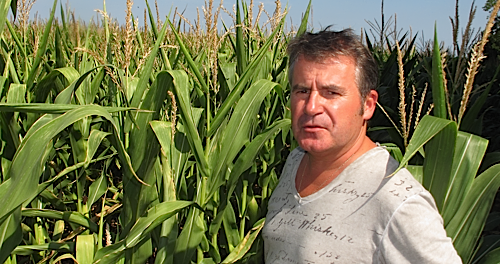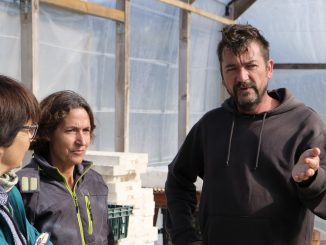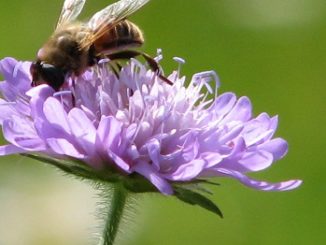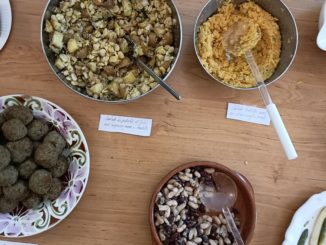
French cereal farmer Paul François (pictured) accidentally inhaled herbicide fumes in 2004. He has been fighting for justice ever since. His exposure to the Monsanto product Lassoo pitched François into a series of administrative and legal battles, each one more daunting than the previous one.
After months in hospital, he spent five years fighting the French authorities to recognise his condition as an occupational illness. The French state now recognises Parkinson’s disease and earlier this year added non-Hodgkins lymphoma to the list of occupational illnesses in the agricultural sector.
François went on to become the first French farmer to challenge Monsanto in a French court. The proceedings opened in 2010: he emerged victorious in February 2012, but Monsanto appealed. The appeal hearing took place in May this year at the Tribunal de Grande Instance at Lyon, where Monsanto France has its headquarters: a judgement on September 10 upheld this the original 2012 victory for the farmer. Monsanto will again appeal.
When it comes to identifying which pesticide could be to blame in any specific case, there is a huge range of potential active ingredients to investigate. “The problem with chronic exposure to pesticides is that you can’t single out any one product: a farmer of my age, of my generation, will have used nearly 900 active ingredients in the course of a farming career. That doesn’t include the different additives that go into any given formulation,” he told ARC2020 at his farm near Limoges.
For example, Lasso, the product which Paul François inhaled when he had his accident, lists alachlor as an active ingredient (40%) as well as monochlorobenzene (54%). “The rest was a dozen or so additives of one sort or another. I would say that in most products, as well as the main active ingredient, you’ll have 10 or more other chemicals as part of the formulation.”
This chemical maze gives the manufacturers plenty of opportunities to hide. “Because there are hundreds of chemical ingredients involved, you can’t attack any of the manufacturers individually, because they’ll say it’s not their chemical that has made this monsieur ill.
“It could be that all the chemicals acted together to generate a cocktail effect. But they won’t say that. They’ll blame a different chemical. My own case is very unusual and there is only one other case like it in France at the moment. Jean-Marie Delion, who is a farmer too, and part of the administration of Phyto-Victimes is taking the same action against Monsanto.”
It is understandable that farmers want justice for their illness, but making it stick is another matter. “When people phone me and say they want to take this or that firm to court, I warn them that it is very difficult to make anything stick. In my case, I had a judgement that said ‘it was Lasso, a product made by Monsanto which poisoned Monsieur François and made him ill.’”
Proving it in a court of law, however, is something else. “Despite this decision, Monsanto says ‘it’s another jurisdiction, it’s nothing to do with us, we are not bound by the conclusions reached by this tribunal.’ Yet the findings of this tribunal are based on facts, expert opinions and reports from [yet more] experts. So I won the first time round and the result of Monsanto’s appeal will be handed down on September 10.”
There could be a realisation by a wider public that: “…rather than accusing farmers of being polluters, the agricultural world is the first link in a chain reaction. Using products [that have been effectively] authorised by the manufacturers, who have been selling dangerous chemicals to farmers.”
François argues that farmers have acted in good faith. “Farmers today describe the product[s] which have been used all the way down the food chain as ‘plant medicines’. That’s the phrase they use most frequently. These are authorised products for agricultural use. Farmers consider that if they respect all the rules for [the] use [of these chemicals] there should be no danger for the consumer.”
For Paul François, this is an article of faith: “The farmer believes [in what he does].” There may be some exceptions, but the majority of farmers would not imagine that the product[s] they use could represent a hazard for the consumer.”






1 Trackback / Pingback
Comments are closed.